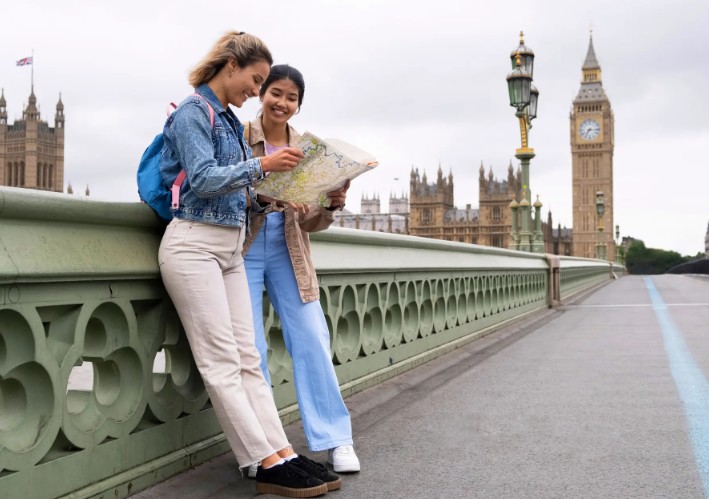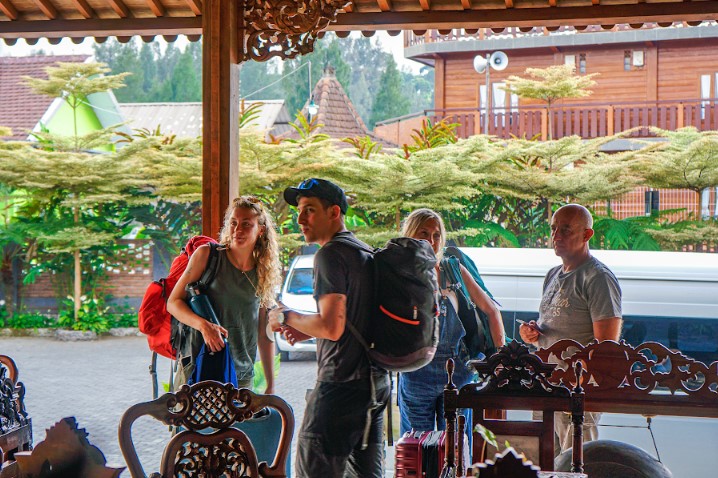The return of polio, one of the most feared diseases in the early 1950s, was particularly unnerving. In the 800-page medical review Chak read recently to prepare for recertification, he found “almost no mention of polio. Because we were under the impression that it was pretty much eradicated.”
That’s how it’s gone in this summer of viruses, as new disease outbreaks became a source of deepening anxiety and even alarm.
“Any prior narrative that we have somehow conquered infectious diseases through treatment and preventive measures hasn’t really come to pass,” said Jeremy Greene, who teaches the history of medicine at the Johns Hopkins University School of Medicine. “The attention to covid-19 as a once-in-a-lifetime historical pandemic is itself already a wishful statement … . Many within the infectious-disease community have already been expecting some ‘Next’ to emerge.”
In many respects, the viral invasion is no accident. A warming climate, vanishing forests and global travel have accelerated the spread of pathogens from animals to people, as well as among people in different parts of the world.
The human population has doubled in the past 50 years to almost 8 billion, fueling the expansion of megacities and demand for land on which to build homes and raise crops and animals. The global land transformation has led to the annual loss of almost 25 million acres of forest, eroding a traditional border between the human and animal worlds, according to the United Nations.
Closer contact with animals puts us in range of the pathogens they carry, which cause 60 percent of all human diseases.
“We live in a world of microbial evolution and the microbes are taking every advantage they can,” said Michael Osterholm, the director of the Center for Infectious Disease Research and Policy at the University of Minnesota.
On a deeper level, some experts suggest, we have demonstrated a fundamental misunderstanding of the positions humans and microbes occupy on the planet. The viruses were here long before we were, and they vastly outnumber us. Lay all viruses end to end, and “they would stretch for 100 million light-years,” according to an editorial in Nature Reviews Microbiology.
German virologist Karin Moelling put it this way: “We are the invaders of the viral world, not vice versa.”
The summer of 2022 may go down as the moment that humans began to get the picture. Infectious diseases became big news.
“It used to be that if one outbreak were reported, out of the hundred or so going on in Africa at any one time, that was quite something. But now, many more get reported,” said Jimmy Whitworth, a doctor specializing in infectious diseases, epidemiology and public health at the London School of Hygiene and Tropical Medicine.
Western health authorities and media gave little attention to Nigeria’s monkeypox outbreak in 2017, though they have become more aggressive in searching out hazardous microbes in soil and sewage.
“One of the things that comes along with the increased attention that we’re paying to contagion is that we are looking at wastewater for all sorts of things now, including polio,” said Stephen Kissler, a postdoctoral fellow in the department of immunology and infectious diseases at Harvard’s T.H. Chan School of Public Health. “We’re able to detect it in places where it might just have gone unnoticed before.”
Kissler said he believes that the high level of viral activity this summer “is partly just poor luck, in the same way that a bad storm is partly bad luck. But it’s bad luck painted over the top of this trend where we can start to expect these events more and more frequently.”
The trend scientists most often cite is the powerful influence of human behavior on the planet. A major turning point occurred in 2009 when for the first time, more people were living in cities than in rural areas, according to the United Nations.
The increase in city dwellers has led to the overburdening and polluting of water and sanitation systems, especially in poorer countries. Such conditions lay the groundwork for the spread of waterborne diseases such as cholera, which caused more than 820,000 infections and almost 10,000 deaths in Haiti following an earthquake in 2010. While cholera is caused by bacteria, water transmits viruses too, including hepatitis A and E viruses, rotaviruses, noroviruses and polioviruses.
Climate change is also driving the risk of infectious diseases. Writing last month in the journal Nature Climate Change, researchers reported that 58 percent of the 375 infectious diseases they examined “have been at some point aggravated by climatic hazards.” Only 16 percent of the diseases had at times diminished because of climate change.
While climate is bringing humans closer to animals, warmer temperatures are attracting insects and other carriers of disease to parts of the world that were once too cold for survival.
The Asian tiger mosquito’s “steady march northward,” carrying diseases such as chikungunya, Zika and dengue to new continents, is the classic example, Whitworth said. The mosquito, known formally as Aedes albopictus, was once found mostly in the tropical forests of Southeast Asia. But over the past 50 years, it has spread to Europe, the Middle East, Africa, and North and South America. The mosquito first appeared in the United States in the mid-1980s in tire dumps in Harris County, Tex.; it has since advanced across most of this country.
Much of the tiger mosquito’s migration has been aided by the international trade in the 1 billion used tires generated each year. Old tires collect stagnant water, forming an ideal breeding ground for mosquitoes.
Peter Hotez, dean of the National School of Tropical Medicine at the Baylor College of Medicine, said the summer’s viral activity was the result of trends that have unfolded over the past decade.
“I think it’s a confluence of climate change, global warming, altered rainfall patterns ― but not climate change alone,” he said. “I think it’s happening in concert with … war and political collapse, socio-economic declines ― because poverty is such a dominant driver ― aggressive urbanization, deforestation, and anti-vaccine activists and what I call anti-science aggression.”
Gonzalo Moratorio, who heads the laboratory of experimental evolution of viruses at the Institut Pasteur de Montevideo in Uruguay, calls these factors, as well as human travel and dependence on animals for meat, “an explosive cocktail that is leading to these pandemic opportunities that we have been witnessing.”
Although Uruguay’s 83 percent vaccination rate against covid-19 surpasses those of the United States (68 percent) and the United Kingdom (75 percent), there remains vocal and even violent opposition to the shots. Moratorio said his house has been painted with anti-vaccine graffiti, and a year ago, he was attacked in the street by a stick-wielding vaccine opponent.
Part of the problem, he said, is that “vaccines did a great job and the success of that job is that there are people who do not know about the existence of these infections because they were close to being eradicated.”
Eradication of an infectious disease is no easy task. The World Health Organization launched its effort to wipe out smallpox in 1959, and it finally declared victory on May 8, 1980, the sole successful elimination of a human infectious disease. A similar effort to end polio has taken more than 30 years and cost $17 billion.
Given this summer’s polio diagnosis of an unvaccinated Rockland County man who had recently traveled to Poland and Hungary, and detection of the virus in the sewage systems of two major cities, the effort to eradicate polio will be “much, much harder,” Kissler said. “With infectious diseases, there’s a huge difference between having none of it, and having a little bit of it.”
World health leaders will not have the luxury of focusing on polio as long as covid-19 continues and other viral threats loom.
The measures taken to fight covid-19 ― shutdowns, social distancing and mask-wearing ― probably contributed to well-below-average deaths from more common viruses such as influenza. As the population eases off these protections, however, viruses are returning to communities that now have lower levels of immunity.
“I think that’s a very good explanation for what we saw with hepatitis,” said Dean Blumberg, chief of infectious diseases at University of California at Davis Health, referring to this year’s global outbreak. “There was very little transmission during … shutdowns, and as things open up, there’s a kind of pent-up susceptibility.”
Another virus he expressed concern about is parechovirus, which has been circulating in the United States at least since spring. The virus can cause fever, an encephalitis-like syndrome and severe sepsis in newborns and young infants.
What worries Blumberg most, however, is measles, which he described as “one of the most infectious pathogens known to humankind.” Measles can be serious and even fatal for small children.
“Even a small dip in population immunity can lead to widespread transmission,” he said. “So we’ve had that dip, and we have increased travel because of the easing of travel restrictions. And much of that travel will go to areas of the world where there are higher rates of measles transmission. I think it’s only a matter of time before there is more measles imported to the U.S.”
In Uruguay, Moratorio said he suspects the next threat may come from mayaro, a dengue-like illness carried by mosquitoes that are native to some of South America’s tropical forests, which “could have the potential to be the new Zika.” He said he hopes people have learned from the pandemic and additional viral activity this summer, “but I’m not sure the decision-makers have learned. Suddenly the market and inflation are the important things.”
Researchers said battling infectious diseases must become a global priority — one in which nations treat an outbreak in another country as their problem, too. They stress that wealthy nations must share vaccine doses with poorer countries to curb the spread of viruses before they travel halfway around the globe.
Hotez said that given the potential of pandemics to “collapse economies,” U.S. leaders must take the threat of epidemics as seriously as they take those of terrorism, nuclear weapons and cyberattacks. “We know from bat ecology studies all over the face of Asia and elsewhere that this is just the beginning,” he said. “We’re going to have covid-25 and covid-31 down the line.”
At Montefiore Nyack Hospital, Azfar Chak said he, his wife and their four children have all been fully vaccinated against the coronavirus. He holds out hope that “we will get back to a sense of normalcy as it was pre-covid,” though he adds, “some viral outbreaks are inevitable.”
Experience has taught him to expect surprises. A few years back, he and his colleagues dealt with a measles outbreak that sickened 312 people in Rockland County, most of them unvaccinated children — long after the World Health Organization had declared endemic transmission of the virus eliminated from the United States.
In its declaration in 2000, WHO had included a note of caution: “Travelers continue to bring measles into the United States, and it can sometimes spread and cause outbreaks among people who are not vaccinated.”






More Stories
The Ultimate Guide to Mount Bromo and Ijen Tour: A Journey into Nature’s Wonders
The Complete Guide to Pantheon Tickets
Journey Through Italy